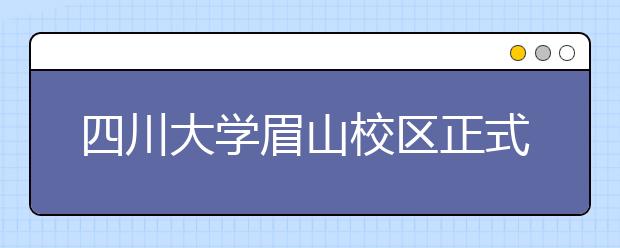金博宝188官网小编给大家带来了2023年4月雅思考试(4月10日)阅读真题答案 2023年7月10日雅思阅读部分考试答案 2023年9月28日雅思阅读考试真题及答案相关文章,一起来看一下吧。
本文目录一览:

2023年4月雅思考试(4月10日)阅读真题答案
您好,我是专注留学考试规划和留学咨询的小钟老师。在追寻留学梦想的路上,选择合适的学校和专业,准备相关考试,都可能让人感到迷茫和困扰。作为一名有经验的留学顾问,我在此为您提供全方位的专业咨询和指导。欢迎随时提问!想要去出国留学,就必须要去完成雅思考试,并且要在该考试里拿到不错的分数。如果大家在考试前有看过以往考试的真题以及答案解析,对于自己的考试是有很多用处的。那么今天就到小钟老师来看一看雅思考试2023年4月10日雅思阅读部分的考试真题答案。
2023年4月10日雅思阅读真题及答案:
Passage 1
主题:自助超市
题型:填空+ 匹配+选择
Passage 2
主题: 水母泛滥的原因及影响
题型:匹配+填空+多选
Passage 3
主题:人类的进化
题型:判断+单选+填空
为何雅思考试阅读总是做不完:
基础薄弱导致读太慢:
很多童鞋的基础不够好,主要体现在词汇量不够及语法掌握不牢,这就会导致题目文章理解困难,分不清复杂句结构,导致抓不住重点。
针对这两点你需要做的是:
1、牢固掌握雅思阅读高频词
2、对文章进行生词和同义替换的总结
同意替换词是雅思阅读最大的出题点,自己进行总结,能帮助自己更深入的理解。
3、掌握雅思阅读重点句型
雅思阅读重在转折、并列、因果等逻辑上的考察,补好基础语法后,需要在这些逻辑句型上花费更多的时间去掌握。
长时间紧扣单个句子:
很多同学会对每个单词逐一停顿,并逐一翻译地阅读,强迫症式地想完全理解每句话的意思,这样会浪费很多时间,也完全没有必要。
在雅思阅读中,要以意群、句子,甚至几个句子为一个单位移动,必要的时候进行跳读。
掌握基础语法和逻辑后,读不懂的快读,读得懂的抓住重点。
还有同学低声朗读或嘴唇蠕动着默读,用手或笔指着卷面一排排地导读,这些都是严重影响阅读速度的坏习惯,现在开始,童鞋们就应有意识的抑制这些习惯性行为。
时间快用完时紧张负面情绪:
在考场上,很多同学越想按时完成越是紧张。一旦一篇文章没有及时做完,后面就慢慢心态崩了...
其实,大家的目标不是9分的话,就不是 非得做完全部的题目,最重要的是,保证已做的题全部正确。
所以在平常的练习中,先保证正确率,前期可以仔细地慢慢做,做到每题全对;
后期熟练做题并牢固掌握词汇语法后,要在1小时内达到40个全对的目标,第一遍对错误的题进行总结,第二遍继续练习直到1小时内全对为止。
最后,不能单纯追求词汇量的提高,真正掌握一个单词在语境中的意思,比自我感动式的狂刷单词有用得多。
雅思考试阅读有哪些考试顺序:
1、何为“顺序原则”
“顺序原则”即雅思官方在题型特点注释中所述的“Answers are in passage order.”说的复杂一些,便是:若某一题型符合“Answers are in passage order”的描述,该题型所包含的几个题目的答案在文中分布的相应位置随题号的变大而逐渐靠后。Sounds like a mouthful, right? 简而言之吧,就是这种题型考生可以顺着题号一题一题地往文章更靠后的位置找,比较符合正常人的阅读习惯(相信很少有人上来先读一篇文章的第三段,或者第四段吧)。
2、顺序原则与题型
宏观地看一篇雅思阅读文章包涵的全部题型,答案分布的顺序也符合题型出现的先后顺序,例如全文包含先判断题,后填空题这两种题型,则较有可能出现的情况是判断题答案分布在文章的前半部分,而填空题在文章后半部分。例如: 剑桥雅思真题集系列7,Test 4 Passage 1: 前7题判断题分布于前6个段落,剩下的段落填空题分布于第9段,和前面7段无关。
3、顺序原则之于解题的指导方针
最后来说说顺序原则和解题过程的关系。两者的关系主要体现在前者对如何读题干的影响。对于遵守顺序题型的题型,考生在审阅题干时候可以选择审一题解一题的做法,因为相关内容在文中按顺序出现,这样做考生也会感到循序渐进,脉络清楚。当然,选择在一开始讲该题型的每个题干都审阅一遍也未尝不可,可先完成较容易定位的题目,再活用顺序原则,缩小较难定位题目所需的搜索范围。对于乱序题型,特别是段落信息配对题,考生须在文中搜索答案之前审阅全部题干,最好读两遍以加深印象:因为信息在文中的分布为乱序,所以第1题的信息有可能出现在比如,倒数第二段,而我们的阅读顺序,如前文所述,肯定是从头段至尾段的。若读一题做一题便可能会出现做一题就耗去读全篇的时间,得不偿失。题号大的题目在这一题型中是很有可能比题号小的题目更早做出来的。
希望以上的答复能对您的留学申请有所帮助。如果您有任何更详细的问题或需要进一步的协助,我强烈推荐您访问我们的留学官方网站 ,在那里您可以找到更多专业的留学考试规划和留学资料以及一对一的咨询服务。祝您留学申请顺利!
2023年7月10日雅思阅读部分考试答案
您好,我是专注留学考试规划和留学咨询的小钟老师。在追寻留学梦想的路上,选择合适的学校和专业,准备相关考试,都可能让人感到迷茫和困扰。作为一名有经验的留学顾问,我在此为您提供全方位的专业咨询和指导。欢迎随时提问!
2023年7月10日雅思考试已经结束了,考完的同学肯定是很想知道考试答案的,雅思考试阅读部分的答案已经出来了,大家赶快来小钟老师看看详细的介绍吧!
一、2023年7月10日雅思阅读部分考试答案
PASSAGE 1
主题:卡耐基(传记)难易度:一般题型:判断+填空+匹配
答案待回忆
PASSAGE 2
主题:古埃及造船难易度:较难题型:段落匹配+填空
答案待回忆
PASSAGE 3
主题:达尔文研究难易度:难题型:匹配+单选+判断
27 - 31 匹配
27. 选explain the meaning of evolutionary psychology
28. 选我们的兴趣和个性是祖先遗传给我们的
29. 选情感很重要对应改变管理效率
30. 选未来职场社交依然保持强势
31. 选达尔文进化论对现代工作环境有影响
32 - 35 判断
32. True
33. False34. Not given35. False
36 - 40 填空
36. business environment
37. MBA graduates
38. back-to-front thinking
39. magic forumla40. human nature
二、雅思阅读提速方法
1、速读训练
雅思阅读考察的是一个考生的阅读理解能力,更是考察关键信息的获取能力,所以考生未必要读完全部内容才开始做题,只要在短时间内消化文章的关键信息即可,所以训练速读能力很重要,比如关键信息一般出现在文章开头,段落的首句或结尾,次要部分要害信息出现在转折语段,掌握这些基本的获取关键信息技巧,就可以争夺足够多的时间了。
2、题型技巧
因为速读并不能解决全部问题,在遇到不同的阅读题型时,我们也应该注意各类题型的解题方法,其中主旨题(List of Headings):主要考察的是考生的概括能力,那么速读对主旨定位的帮助很大,但遇到一些考察细节的题目(判断题T/F/NG、选择题Multiple Choice等),则需要你能够迅速定位题目与原文中的关键词。
3、同义替换
除了部分专有名词无法替换之外,其实雅思阅读处处可见同义替换,同义替换的方式太多,同义词、近义词、短语,甚至句型转换都有可能进行替换。
4、积累词汇
很多单词看不懂的结果就是每个句子都看不懂,只能硬着头皮看下去。多看几句,又忘了前面在讲什么,又回头看,这样速度怎么可能快?其实雅思阅读文章有很多学术词汇,这类专业词汇并不会影响考生们做题,适当进行拓展阅读即可了解到,所以不必过分追求这些词汇。
三、雅思阅读题型
paragraph headings(段落标题)
会有10个左右的标题选项出现在阅读文章的后面,其中会包含一个或两个段落和其标题的几个例子,这种题目要求考生对给出的段落在文章内容中找出相匹配的段落标题,虽然题目给出的标题适用于多个段落,但在正式的考试中一个选项只能适用于一个段落。
回答问题
根据文章或图表回答问题这种题目是考察考生对信息的筛选和提取能力,如用下列单词提问what、which、when、where、who、whose、whom、why、 how等。辨别正误题型
该题型还包括(not given / not mentioned)没有提到,有时还会出现下列提法精确/不精确、一致/不一致、正确与不正确,辨别正误题型属于难度比较大的题型通常在阅读测试中的第三或者第四部分出现。
摘要、填空题型
填空题通常有两种形式:一种是根据文章内容选择词或短语填空,第二种形式是利用所给单词或短语让考生填空,上述两种形式填空题都需要借助语法、词法知识分析所需填空文章中相关句子的含义。
配对题(matching)
配对的范围主要包括新产品的发明家、发明时间、事件和事件的发展经过、事件发生的原因和结果、文章内容中概念的解释和标志性事物及其所处的年代等等。
多重选择题型
雅思阅读测试中的多重选择题型与托福测试中的多重选择题型,虽然类似实质上差别很大,雅思阅读测试中的多重选择题型更多侧重于对文章的理解而非强调语法、词法的运用。
完成句子题型
这种题目比较花时间需要考生根据选项在文章仔细的寻找相关的信息,这也是考察小伙伴们筛选信息和提取信息的能力。
四、雅思阅读备考须知
1 烤鸭们在备考雅思阅读第一步不要疯狂做剑桥真题,资源是有限的,你应该先夯实高频词汇和必备的语法内容。
2 最好的雅思阅读备考材料,除了剑桥真题还是剑桥真题。
3 雅思阅读高频单词你可以从练习中归纳,但对于时间很紧的同学使用一本好的单词书也不失为好的选择。
4 时间是我们最大的敌人,大家千万别养成拖沓的习惯,规定时间完成规定练习时必须的。
5 如果不能20分钟完成一篇阅读文章,你可以试着用渐进法练习,先以25分钟练习,慢慢缩减到23分钟,最终达到考试要求。
6 阅读单项很在意正确率和时间两个环节,而这两个环节很难同时提高,烤鸭们首先应该提高的是正确率,在正确率稳定的前提下,训练速度。
7 对于阅读中的判断题你一定要看清要求到底是填TRUE还是YES,虽然有时候不扣分,但是我们最好不要在考试体验冒险的感觉。
8 判断题最难区别的是错和未提到(False和Not Given),但是最难判断的是对(True),因为原文和题目之间经过了复杂的统一转换和句型变化。
9 小标题不要只是寻找每一段的第一句和最后一句,数据显示这样做只有三分之一的正确率,想要更多分数,你还要关注文中转折词出现的地方。
10 小标题题型中的NB是不需要阅读的,要么是废话,要么是谎话。
11 段落中问句的后面和举例子的前面也许会出现主题句。
12 两个选项雌雄难辨,优先选择后一个选项。
希望以上的答复能对您的留学申请有所帮助。如果您有任何更详细的问题或需要进一步的协助,我强烈推荐您访问我们的留学官方网站 ,在那里您可以找到更多专业的留学考试规划和留学资料以及一对一的咨询服务。祝您留学申请顺利!
2023年9月28日雅思阅读考试真题及答案
您好,我是专注留学考试规划和留学咨询的小钟老师。在追寻留学梦想的路上,选择合适的学校和专业,准备相关考试,都可能让人感到迷茫和困扰。作为一名有经验的留学顾问,我在此为您提供全方位的专业咨询和指导。欢迎随时提问!昨天刚刚结束了最新一期的雅思考试,大家有没有被难倒呢?接下来就跟着小钟老师来看一看2023年9月28日雅思阅读考试真题及答案。
Passage1: 希腊硬币Greek coinage
参考答案:
1. 希腊coin早在3000年就出现了=F
2. T
3. Sparta地区侵略Athens并强制Athens用他们的货币=F
4. Great coins在整个欧洲流传=F
5. Persian 入侵了Lydia并且使用人家的硬币=T
6. 用硬币上的头像来奖励做出杰出贡献的人=NG
7. mint
8. stamps
9. anvil
10. reserve dies
11. 希腊硬币的重量至少=0.15g
12. 硬币的图案=the king的头像
13. 希腊被波斯征服之前的花纹是lion and doil
14. coin 在雅典被称为 owl
Passage2: 悉尼交通标识Street markers in Sydney
Passage3: Musical Maladies
参考答案:
A. Music and the brain are both endlessly fascinating subjects, and as a neuroscientist specializing in auditory learning and memory, I find them especially intriguing. So I had high expectations of Musicophilia, the latest offering from neurologist and prolific author Oliver Sacks. And I confess to feeling a little guilty reporting that my reactions to the book are mixed.
B. Sacks himself is the best part of Musicophilia. He richly documents his own life in the book and reveals highly personal experiences. The photograph of him>C. The preface gives a good idea of what the book will deliver. In it Sacks explains that he wants to convey the insights gleaned from the enormous and rapidly growing body of work>complex and often bizarre disorders to which these are prone." He also stresses the importance of the simple art of observation" and the richness of the human context. He wants to combine observation and description with the latest in technology,” he says, and to imaginatively enter into the experience of his patients and subjects. The reader can see that Sacks, who has been practicing neurology for 40 years, is torn between the old-fashioned path of observation and the new-fangled, high-tech approach: He knows that he needs to take heed of the latter, but his heart lies with the former.
D. The book consists mainly of detailed descriptions of cases, most of them involving patients whom Sacks has seen in his practice. Brief discussions of contemporary neuroscientific reports are sprinkled liberally throughout the text. Part I, Haunted by Music," begins with the strange case of Tony Cicoria, a nonmusical, middle-aged surgeon who was consumed by a love of music after being hit by lightning. He suddenly began to crave listening to piano music, which he had never cared for in the past. He started to play the piano and then to compose music, which arose spontaneously in his mind in a torrent of notes. How could this happen? Was I the cause psychological? (He had had a near-death experience when the lightning struck him.) Or was it the direct result of a change in the auditory regions of his cerebral cortex? Electro-encephalography (EEG) showed his brain waves to be normal in the mid-1990s, just after his trauma and subsequent conversion to music. There are now more sensitive tests, but Cicoria has declined to undergo them; he does not want to delve into the causes of his musicality. What a shame!
E. Part II, “A Range of Musicality,” covers a wider variety of topics,but unfortunately, some of the chapters offer little or nothing that is new. For example, chapter 13, which is five pages long, merely notes that the blind often have better hearing than the sighted. The most interesting chapters are those that present the strangest cases. Chapter 8 is about “ amusia, ” an inability to hear sounds as music, and “dysharmonia,”a highly specific impairment of the ability to hear harmony, with the ability to understand melody left intact. Such specific dissociations are found throughout the cases Sacks recounts.
F. To Sacks's credit, part III, "Memory, Movement and Music," brings us into the underappreciated realm of music therapy. Chapter 16 explains how "melodic intonation therapy" is being used to help expressive aphasic patients (those unable to express their thoughts verbally following a stroke or other cerebral incident)>G. To readers who are unfamiliar with neuroscience and music behavior, Musicophilia may be something of a revelation. But the book will not satisfy those seeking the causes and implications of the phenomena Sacks describes. For>appears to be more at ease discussing patients than discussing experiments. And he tends to be rather uncritical in accepting scientific findings and theories.
H. It's true that the causes of music-brain oddities remain poorly understood. However, Sacks could have done more to draw out some of the implications of the careful observations that he and other neurologists have made and of the treatments that have been successful. For example, he might have noted that the many specific dissociations among components of music comprehension, such as loss of the ability to perceive harmony but not melody, indicate that there is no music center in the brain. Because many people who read the book are likely to believe in the brain localization of all mental functions, this was a missed educational opportunity.
I. Another conclusion>patient. Treatments mentioned seem to be almost exclusively antiepileptic medications, which "damp down" the excitability of the brain in general; their effectiveness varies widely.
J. Finally, in many of the cases described here the patient with music-brain symptoms is reported to have "normal" EEG results. Although Sacks recognizes the existence of new technologies, among them far more sensitive ways to analyze brain waves than the standard neurological EEG test, he does not call for their use. In fact, although he exhibits the greatest compassion for patients, he conveys no sense of urgency about the pursuit of new avenues in the diagnosis and treatment of music-brain disorders. This absence echoes the book's preface, in which Sacks expresses fear that the simple art of observation may be lost" if we rely too much on new technologies. He does call for both approaches, though, and we can only hope that the neurological community will respond.
27-30:B C A A
31-36:YES NG NO NG YES NO
37-40:F B A D
希望以上的答复能对您的留学申请有所帮助。如果您有任何更详细的问题或需要进一步的协助,我强烈推荐您访问我们的留学官方网站 ,在那里您可以找到更多专业的留学考试规划和留学资料以及一对一的咨询服务。祝您留学申请顺利!
以上就是金博宝188官网小编给大家带来的2023年4月雅思考试(4月10日)阅读真题答案 2023年7月10日雅思阅读部分考试答案 2023年9月28日雅思阅读考试真题及答案,希望能对大家有所帮助。









